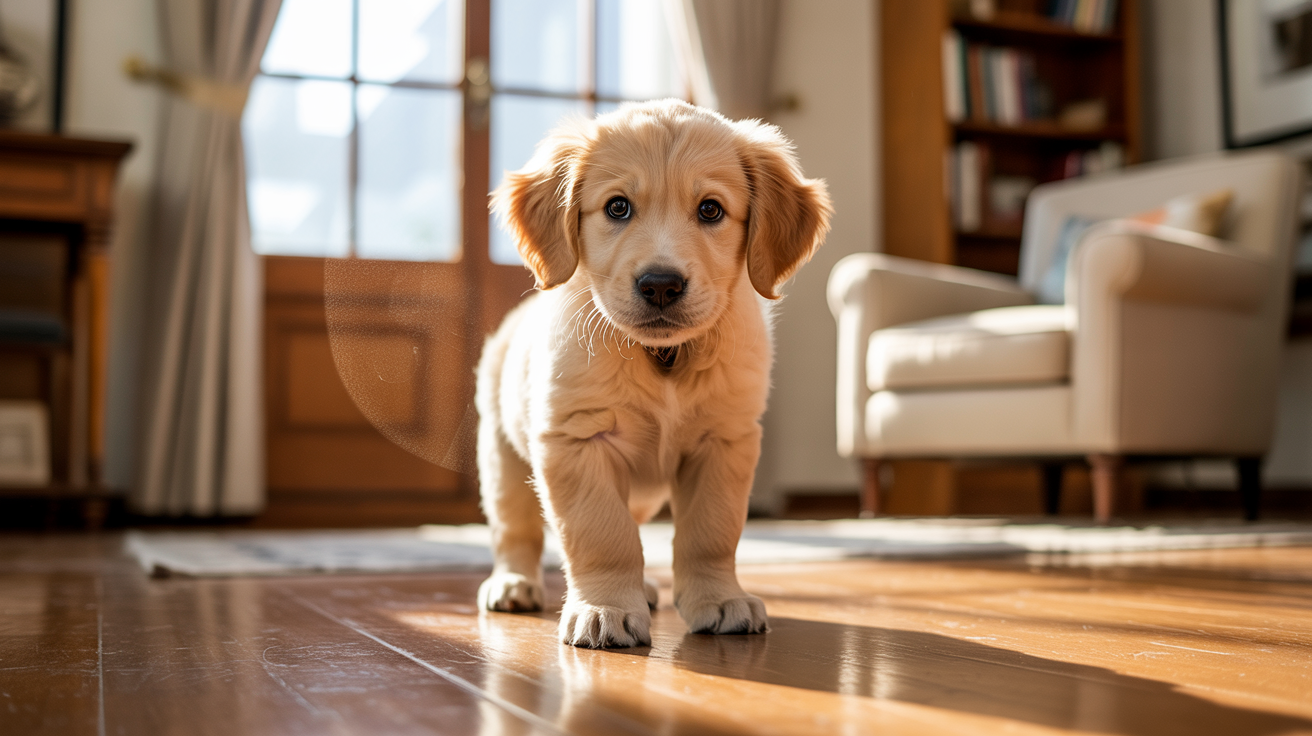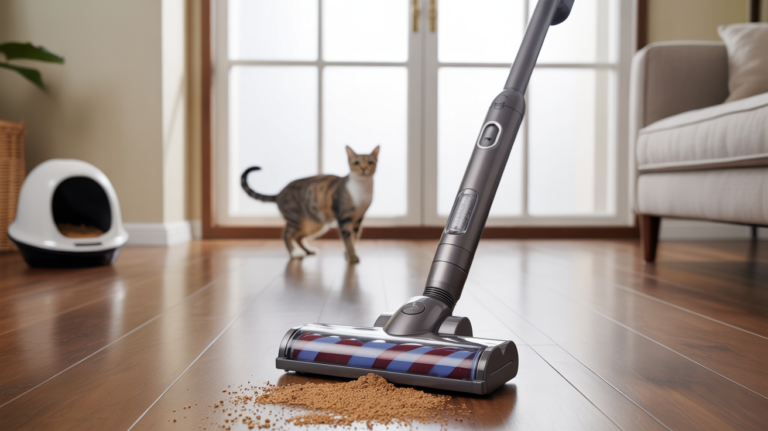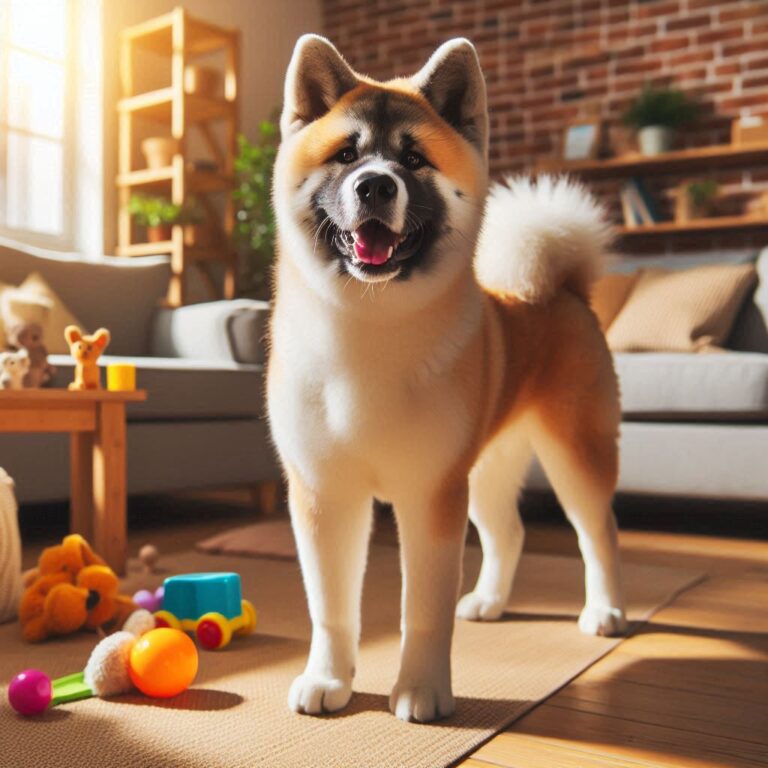Why Can’t My Dog Walk on Wood Floors?
It’s a common sight for dog owners—watching your dog hesitate or outright refuse to walk on wood floors. Whether they’re cautiously tiptoeing around or completely avoiding them, it’s enough to make you wonder what’s going on. Wood floors might be beautiful and durable for us, but they can be tricky for our furry friends. From slipping and sliding to strange sensations under their paws, there are several reasons why your dog might be hesitant to walk on these smooth surfaces.

We’re about to explore why wood floors might be a challenge for your dog and, more importantly, how you can help them feel confident striding across them without hesitation. Let’s get your dog back to walking with confidence and enjoying every inch of your home!
Understanding Why Dogs Avoid Wood Floors
1. Lack of Traction and Slipperiness
One of the most common reasons dogs hesitate to walk on wood floors is the lack of traction. Dogs have paws designed for grip, especially when walking on natural surfaces like grass, dirt, or even carpet. Their paws are equipped with pads that help provide traction, but smooth, shiny wood floors can make it difficult for them to maintain balance.
This can be particularly problematic for certain dog breeds with softer, flatter paw pads or dogs with short legs. When dogs attempt to walk on wood floors, their paws may slip, causing them to feel unsteady or even fall. If this happens, they may become fearful or hesitant to try again.
2. Fear of Falling or Previous Injuries
For dogs that have slipped or fallen on wood floors before, it’s easy to see how this could lead to a long-lasting fear. A fall can be especially painful for dogs with older joints or mobility issues, such as arthritis, or for small breeds with fragile frames. The fear of slipping can make a dog reluctant to try walking on the floor again, as they may associate the surface with pain or discomfort.
Older dogs, in particular, may be more sensitive to slippery floors because their joints or muscles may not be as strong as they once were. This fear can make even simple tasks like walking across the living room a stressful experience for them.
3. Sensory Sensitivities
Some dogs have heightened sensory sensitivities. They may be more sensitive to the sounds or vibrations that come from walking on wood floors. For example, the sound of their nails clicking or the vibration of their paws against the wood could startle them, especially if they’ve never been exposed to it before. Additionally, some dogs are more attuned to the sound of footsteps or other noises that bounce off the hard surface, which can be unnerving to them.
If your dog is easily startled by sounds or has a heightened sense of hearing, this could contribute to their reluctance to walk on wood floors.
4. Lack of Early Exposure
Puppies and young dogs that are not exposed to a variety of surfaces during their critical developmental periods may develop a fear of unfamiliar textures, including wood floors. If a dog hasn’t had the chance to walk on different types of flooring from a young age, they may not be comfortable navigating wood floors as they get older. Dogs that have only been raised in carpeted homes or areas with soft ground may find the experience of walking on wood floors disorienting or frightening.
Practical Solutions to Help Your Dog Walk on Wood Floors
Now that we understand why dogs may struggle with wood floors, let’s explore some practical solutions to help them feel more confident. Overcoming this fear requires patience, consistency, and understanding. Here are some strategies to help your dog walk on wood floors with ease:
1. Create a Safe Pathway
One of the simplest ways to help your dog feel more comfortable on wood floors is by laying down rugs, yoga mats, or non-slip runners to create a safe path. This can be especially helpful if your dog needs to travel across a large area of wood flooring, such as from one room to another. By giving your dog a designated, non-slippery path to walk on, you can help them get used to the idea of walking on the floor without the fear of slipping.
Make sure the rugs or mats are securely fastened so they don’t shift or bunch up while your dog walks on them. This will reduce the risk of tripping or further stress. Over time, you can gradually remove some of the mats as your dog becomes more confident.
2. Positive Reinforcement Training
Training is an essential part of helping your dog overcome their fear of wood floors. Start by using positive reinforcement to encourage your dog to step onto the floor. Begin by placing treats, toys, or their favorite blanket near the edge of the wood floor. Gradually move the treats further onto the wood surface, rewarding your dog each time they step onto the floor.
This process helps your dog build positive associations with the wood floor, which can reduce their fear over time. Be patient, and keep training sessions short and fun. The goal is to make the experience enjoyable for your dog rather than forceful.
3. Maintain Proper Grooming
Sometimes, a dog’s inability to walk on wood floors can be traced back to poor grooming. Dogs with long nails or excess hair between their paw pads may have trouble maintaining grip on slippery floors. Keeping your dog’s nails trimmed and their paw pads clean can improve their traction on smooth surfaces.
If your dog has long hair between their toes, consider trimming it regularly to ensure that their paws have the best possible contact with the ground. Regular grooming not only enhances your dog’s ability to walk on wood floors but also promotes overall health and comfort.
Read Also: How Can I Get My Dog to Eat Dry Food
4. Use Traction-Enhancing Products
There are several products available that can help dogs maintain better traction on slippery floors. One popular option is Dr. Buzby’s ToeGrips, which are rubber grips that slip over your dog’s nails and provide additional traction on smooth surfaces. These grips can be particularly useful for senior dogs or those with mobility issues.
Another option is adhesive paw pads, which are designed to enhance your dog’s grip on smooth floors. These pads are easy to apply and remove, making them a great temporary solution while your dog gets used to walking on wood floors.
5. Consult a Veterinarian
If your dog’s fear of wood floors is persistent or worsening, it’s a good idea to consult a veterinarian. There could be underlying medical issues, such as arthritis, joint pain, or vision problems, contributing to their reluctance. A vet will be able to assess your dog’s health and provide appropriate treatments or therapies to help them overcome their fear.
For example, if your dog has joint pain, your vet may recommend pain management or anti-inflammatory medication. If vision problems are the issue, a vet can guide you on how to assist your dog in adjusting to their environment.
Real-Life Experiences
Many dog owners have shared similar stories about their dogs being afraid of wood floors. One Reddit user shared their experience with a dog that acted as if the hardwood floor was “made of lava,” refusing to walk on it due to fear. After experimenting with different solutions, they found success by placing yoga mats to create a safe pathway. This helped the dog feel more confident and gradually become comfortable walking on the floor.
Another dog owner shared that their senior dog was hesitant to walk on the wood floors due to arthritis. With the help of non-slip mats and some extra training, the dog was eventually able to walk across the floors without fear or hesitation. This shows that with patience and the right approach, most dogs can overcome their fear of wood floors.
Frequently Asked Questions (FAQs)
Why doesn’t my dog want to walk on wood floors?
Your dog’s hesitation to walk on wood floors could be due to a variety of reasons. One of the most common causes is a lack of traction. Wood floors are slippery, and if your dog’s paws can’t get a good grip, they may feel unstable or scared of falling. rface, can also contribute to their reluctance.
Why can’t my dog get up on hardwood floors?
If your dog is struggling to get up on hardwood floors, it might be due to their age, joint pain, or physical limitations. Older dogs or dogs with arthritis may find it more difficult to walk or stand on smooth, slippery surfaces because it exacerbates their joint discomfort.
Is it bad for dogs to walk on hardwood floors?
It’s not inherently bad for dogs to walk on hardwood floors, but there are some considerations. For some dogs, especially those with joint problems or a fear of slipping, hardwood floors can be challenging and potentially cause harm. The lack of traction can lead to falls or strain on their muscles and joints.
Why won’t my dog walk on certain surfaces?
Dogs can be particular about the surfaces they walk on, and their preferences usually stem from factors like texture, noise, and traction. Some dogs are sensitive to the smoothness of hardwood, tiles, or even certain types of carpet. They might find these surfaces too slippery or unstable. It’s also possible that your dog had a negative experience on that surface, like slipping or falling, which created a fear of walking on it. Sensory sensitivities, such as being startled by the sounds of paws tapping on certain floors, could also play a role.
Why is my dog all of a sudden afraid to walk on hardwood floors?
If your dog was previously comfortable walking on hardwood floors but has suddenly developed a fear, it’s likely related to a traumatic experience or physical discomfort. They may have slipped or hurt themselves on the floor, causing a lasting fear of it. Older dogs with joint pain may also struggle more with slippery surfaces as they age. If this fear persists, it’s worth checking for any underlying medical conditions or talking to a veterinarian or behaviorist for help.
What surfaces do dogs not like to walk on?
Dogs generally avoid surfaces that are slippery, hard, or uncomfortable under their paws. Common surfaces dogs tend to dislike include:
- Wood floors: Due to their smooth and slippery texture, which provides little traction.
- Tile or linoleum floors: These can also be slippery and uncomfortable for dogs to walk on.
- Wet or damp floors: Moisture can make surfaces even more slippery and may cause discomfort.
- Carpet with deep piles: Some dogs may dislike walking on thick carpet because it can make it harder for them to get a good grip, and it may cause them to sink in.
- Best Dog Car Seat For French Bulldog - October 1, 2025
- How to Prevent Scratches on Hardwood Floors from Dogs - October 1, 2025
- How To Protect Hardwood Floors From Scratches - October 1, 2025






